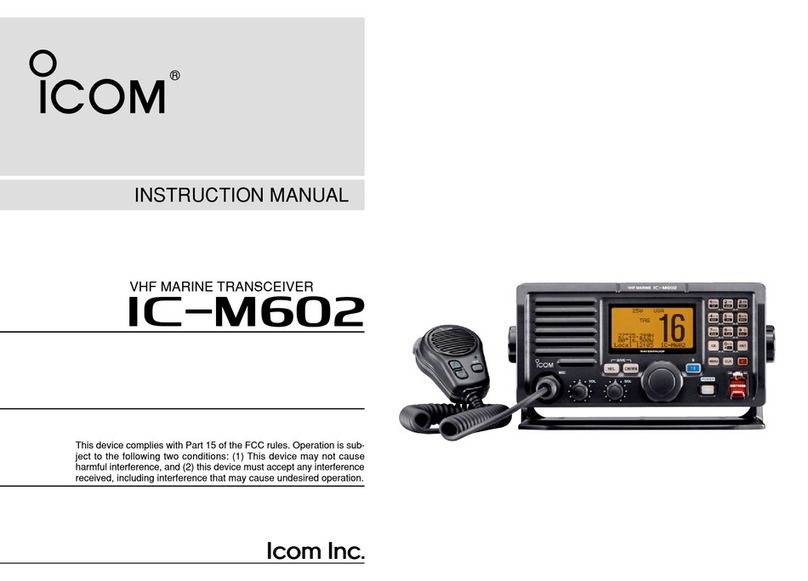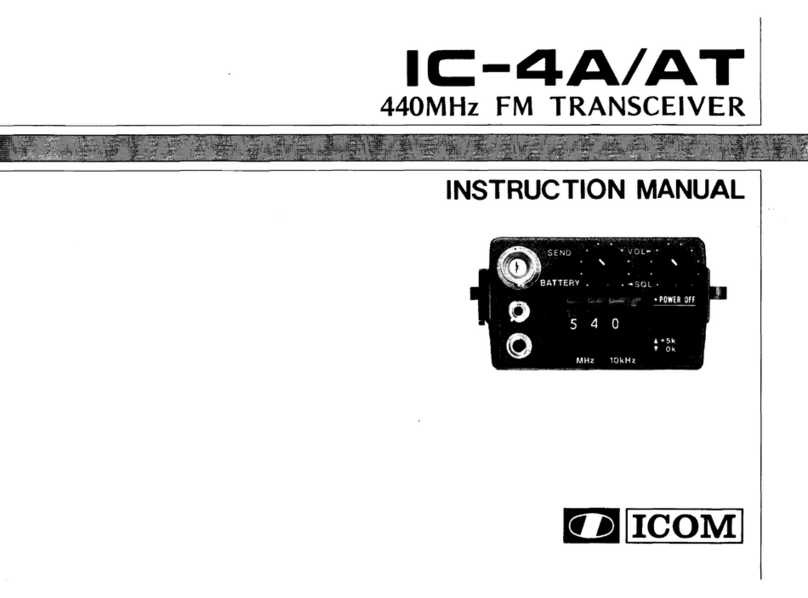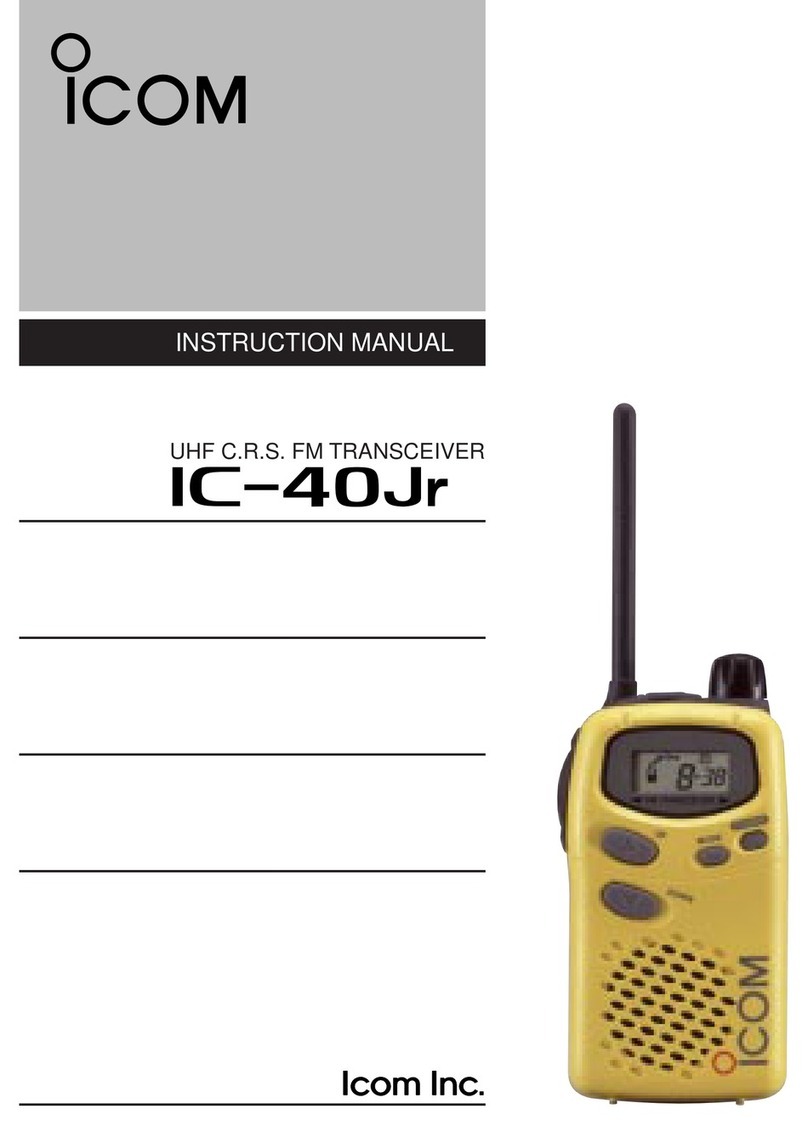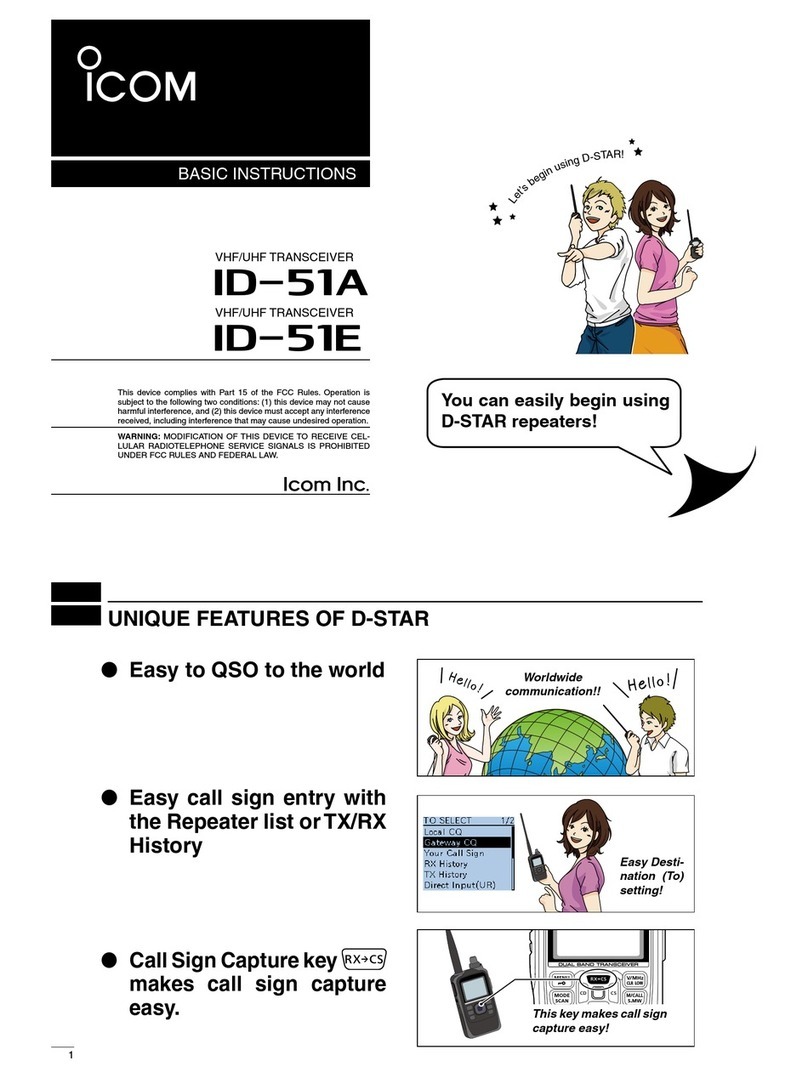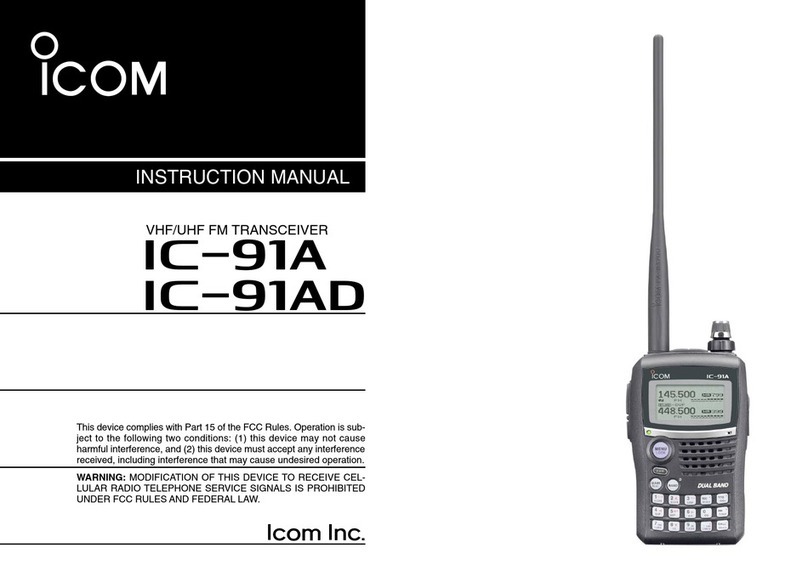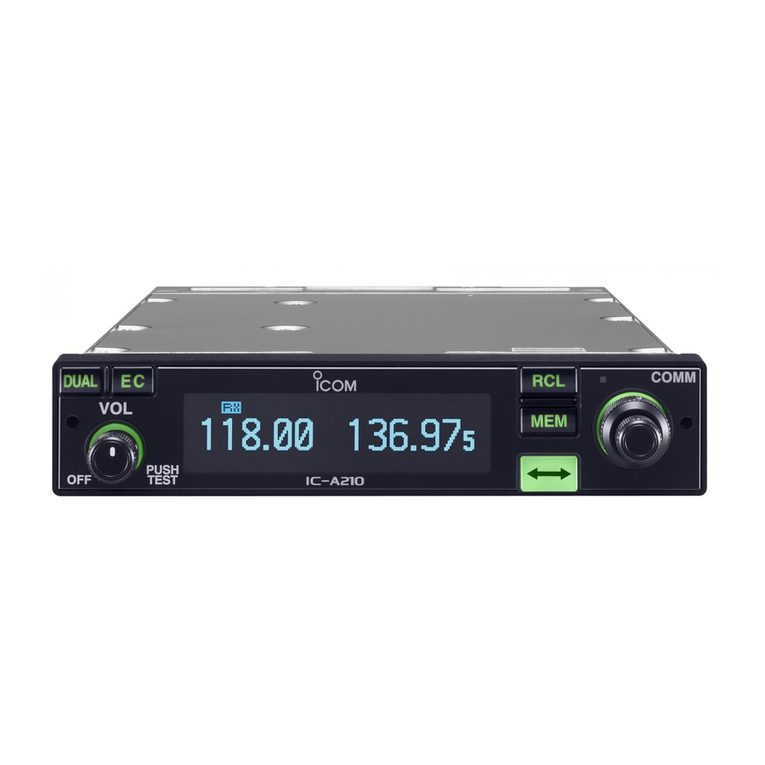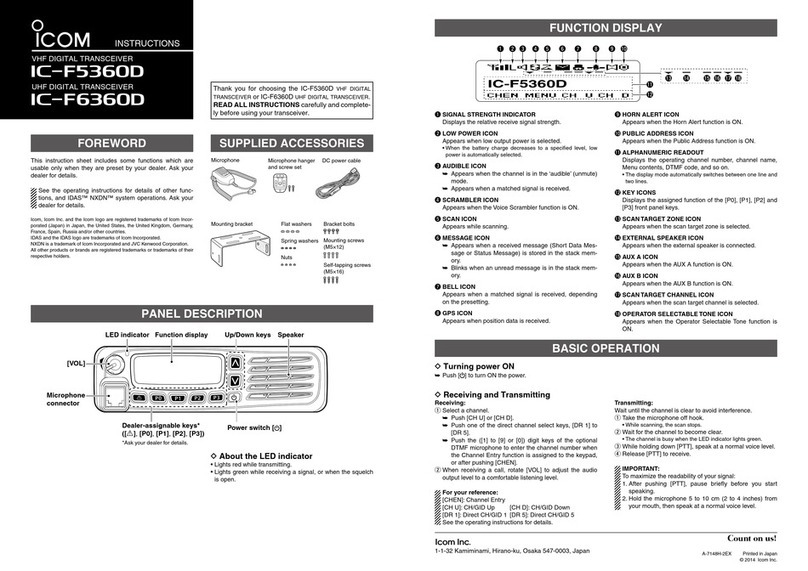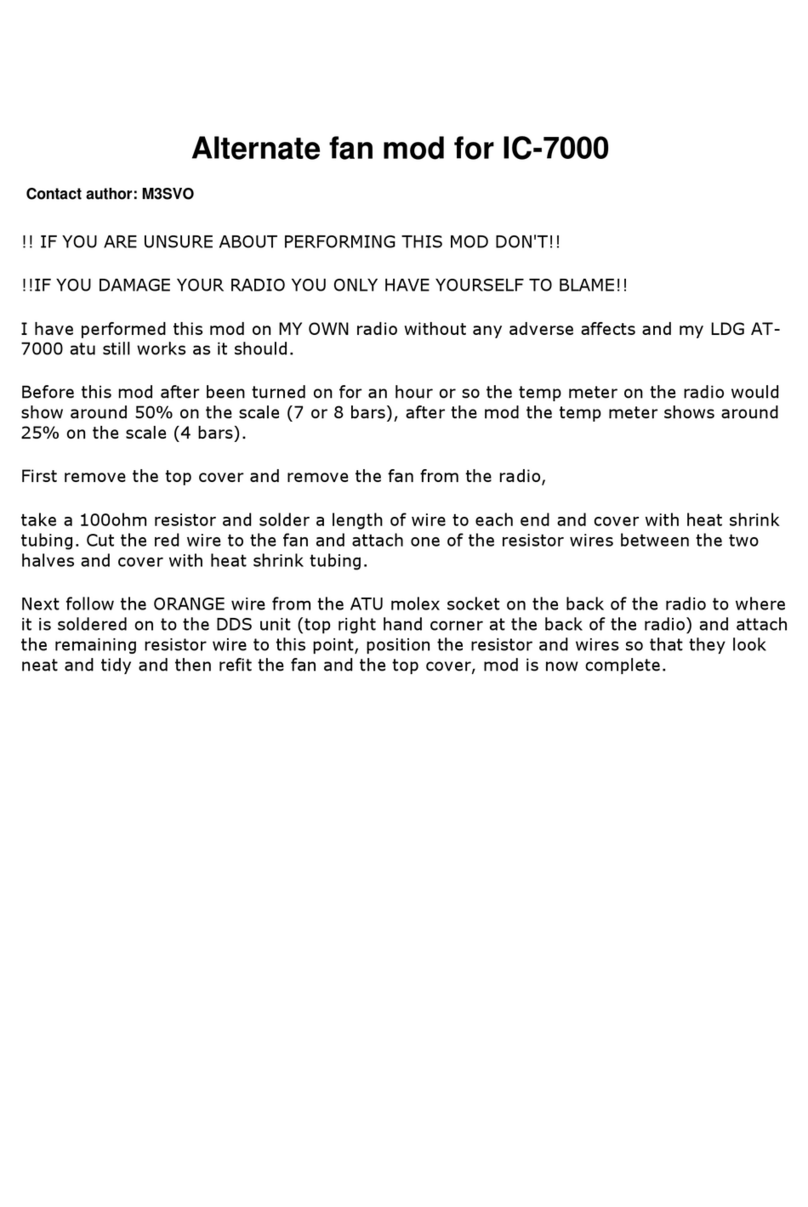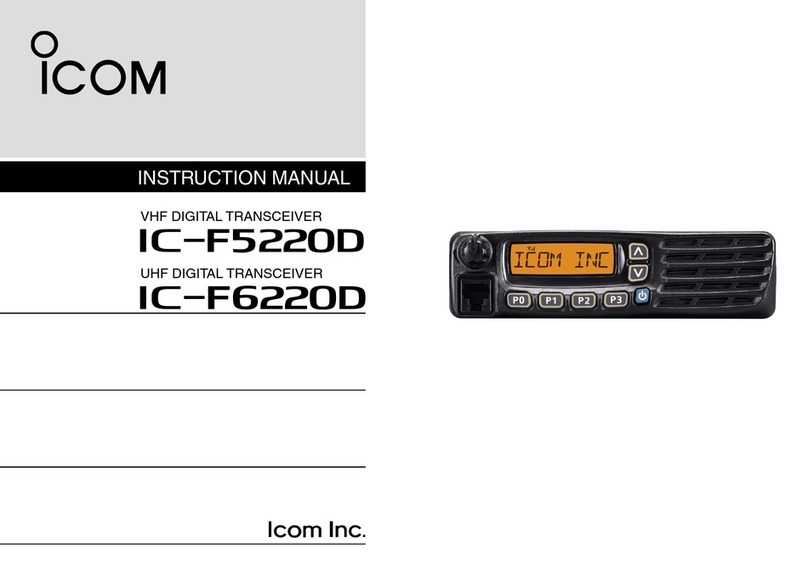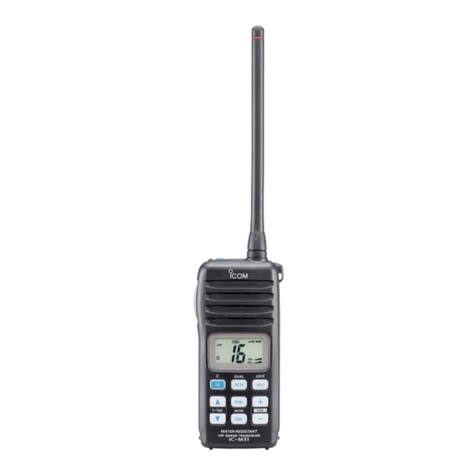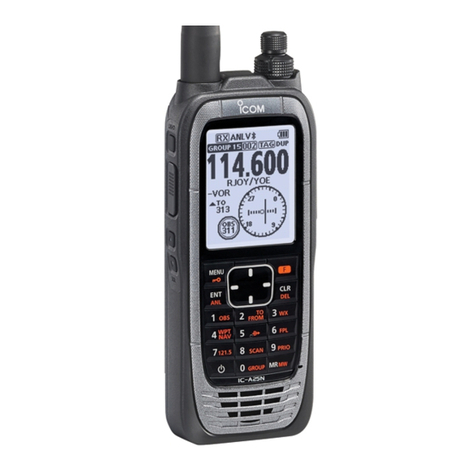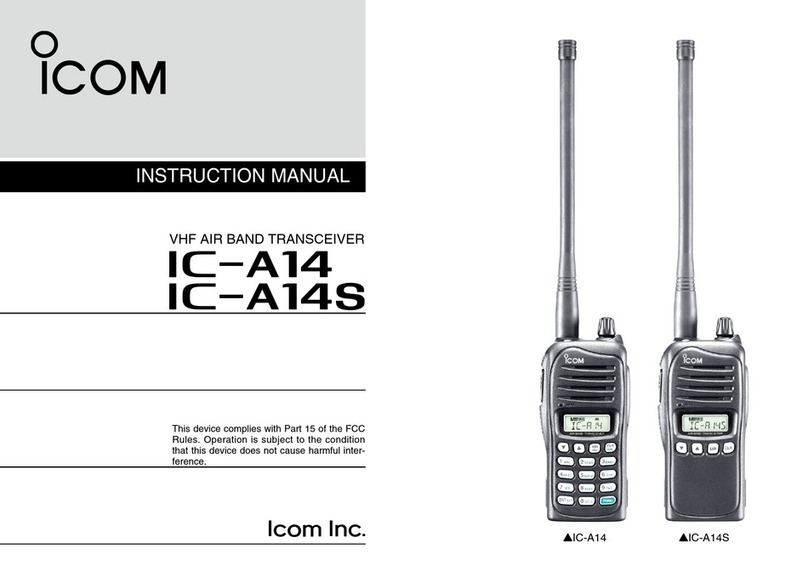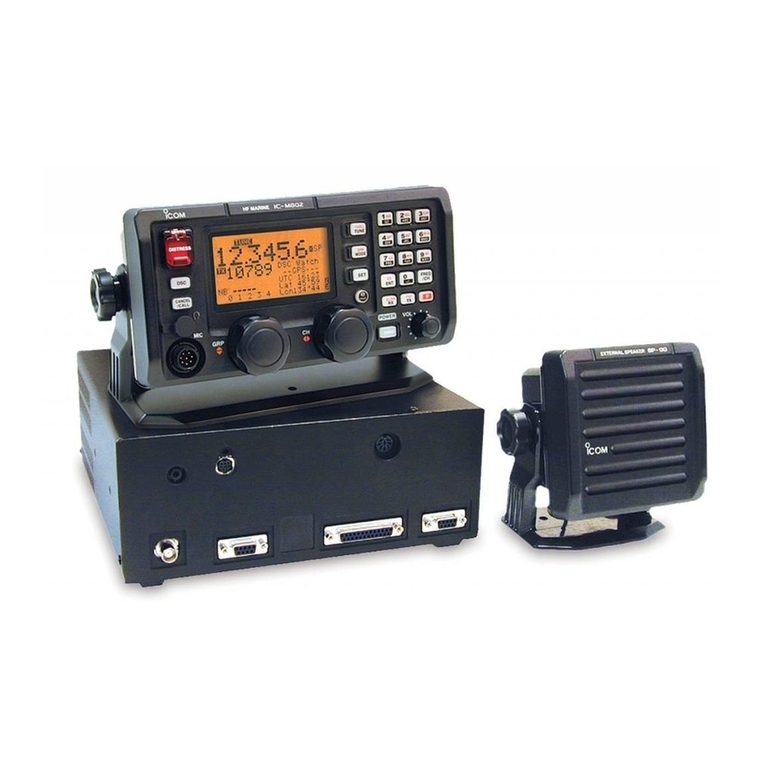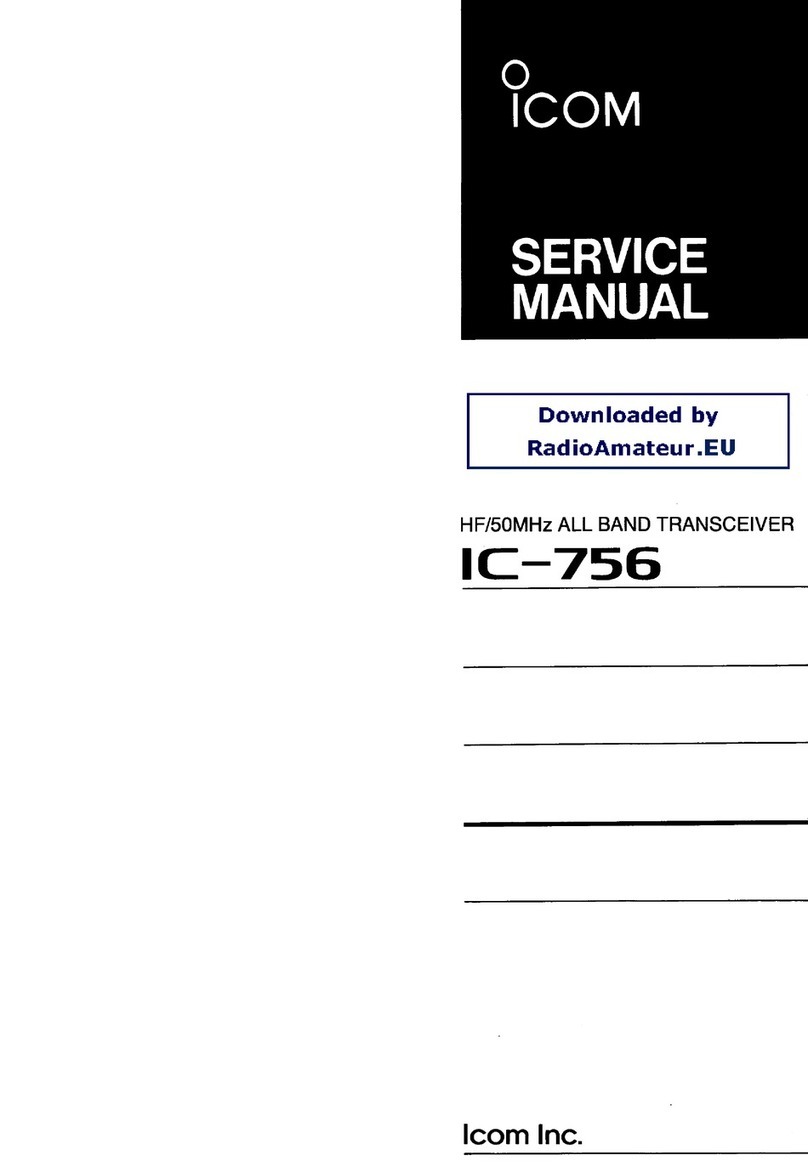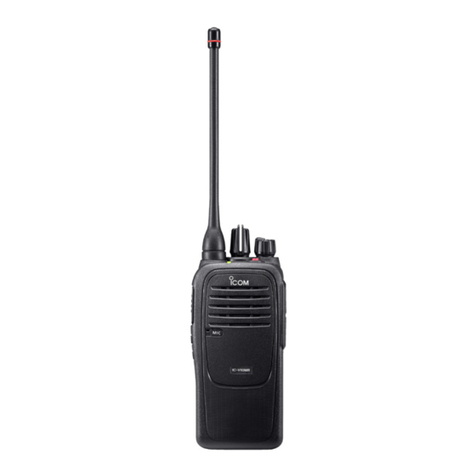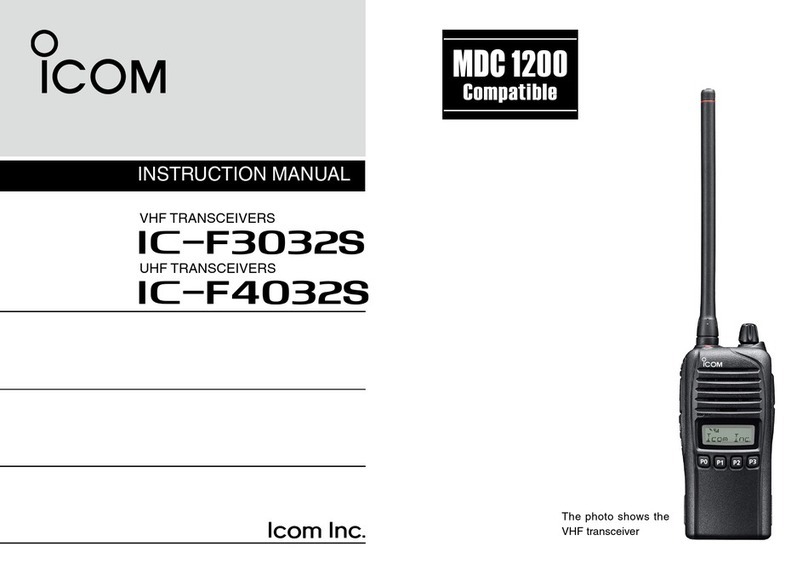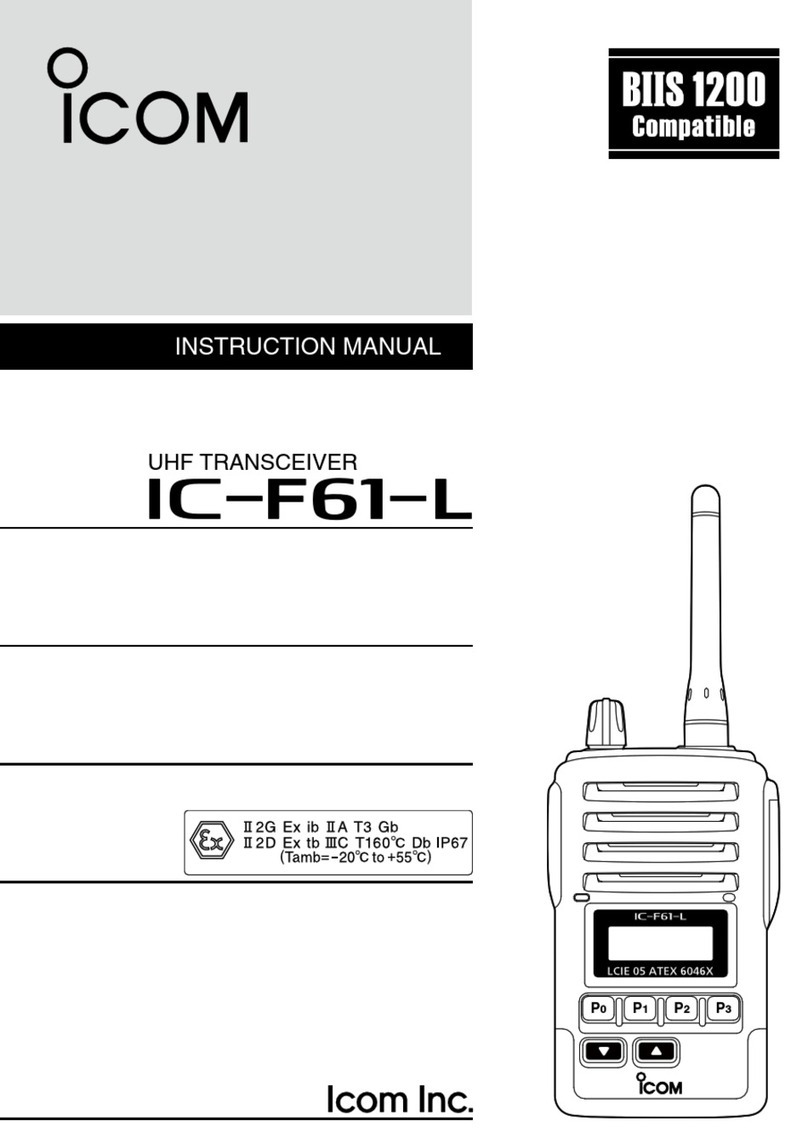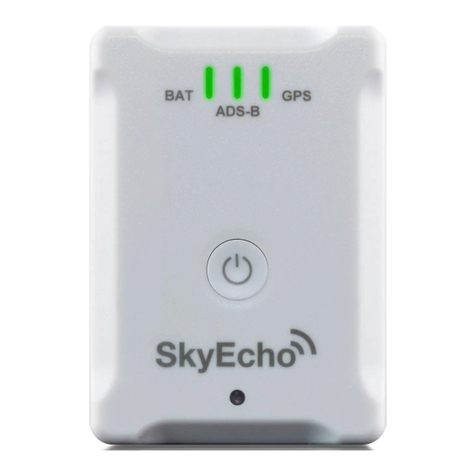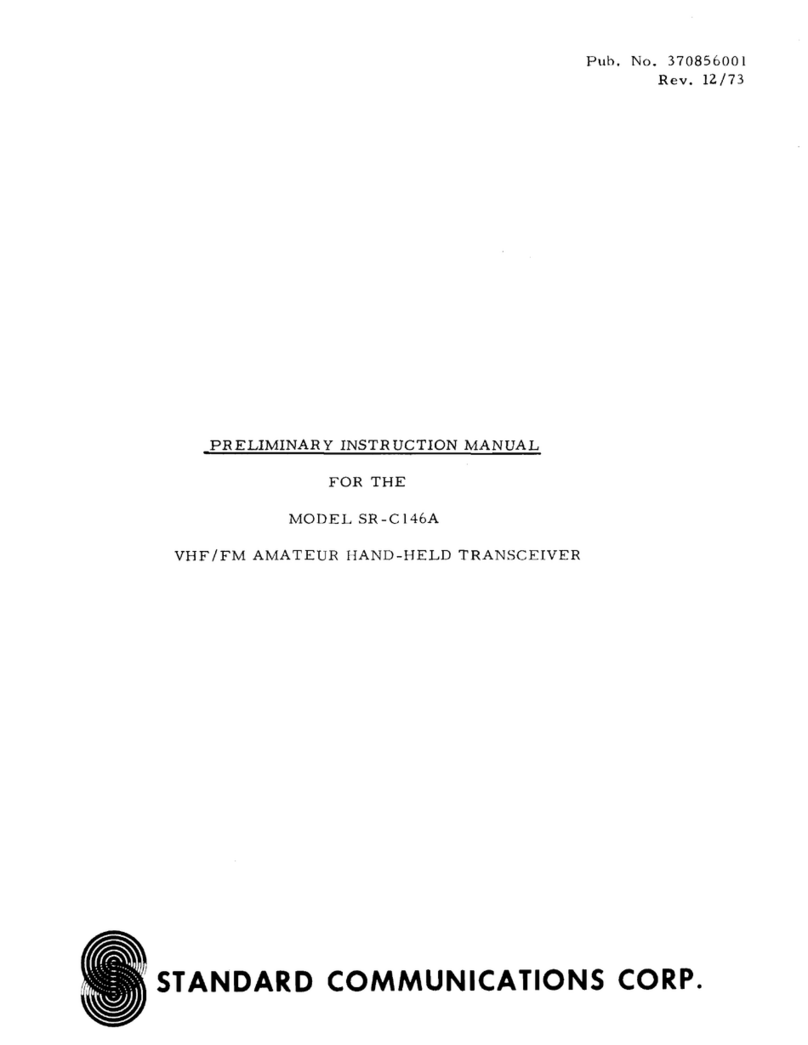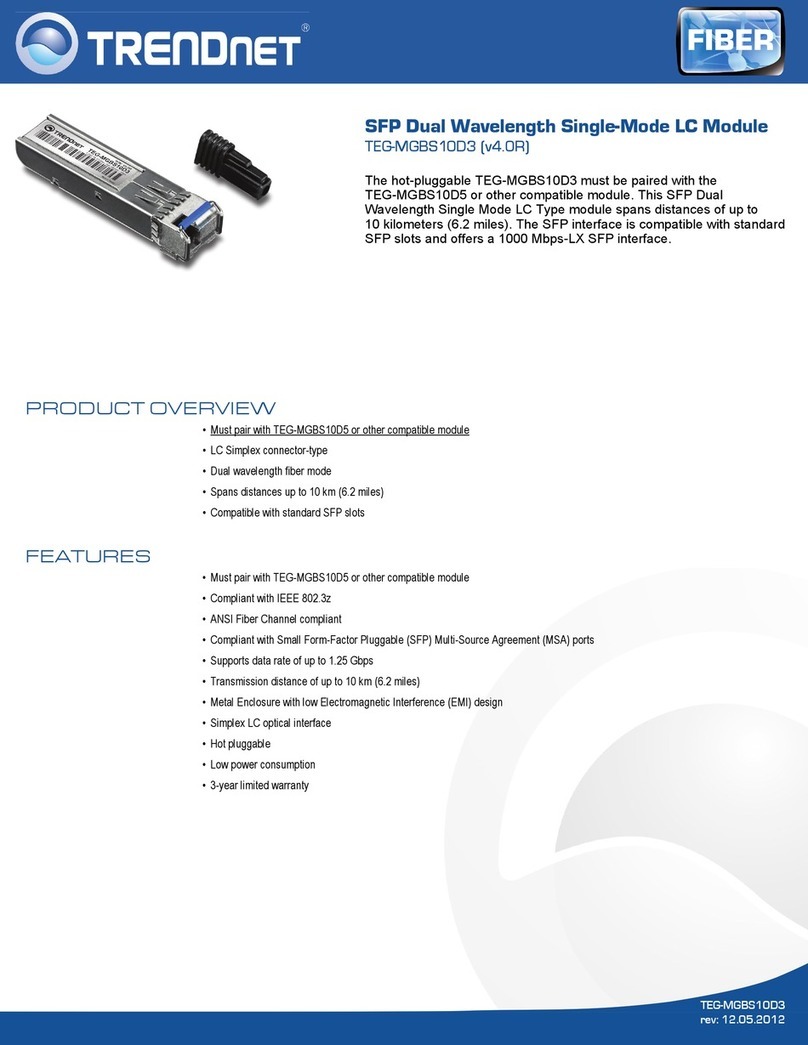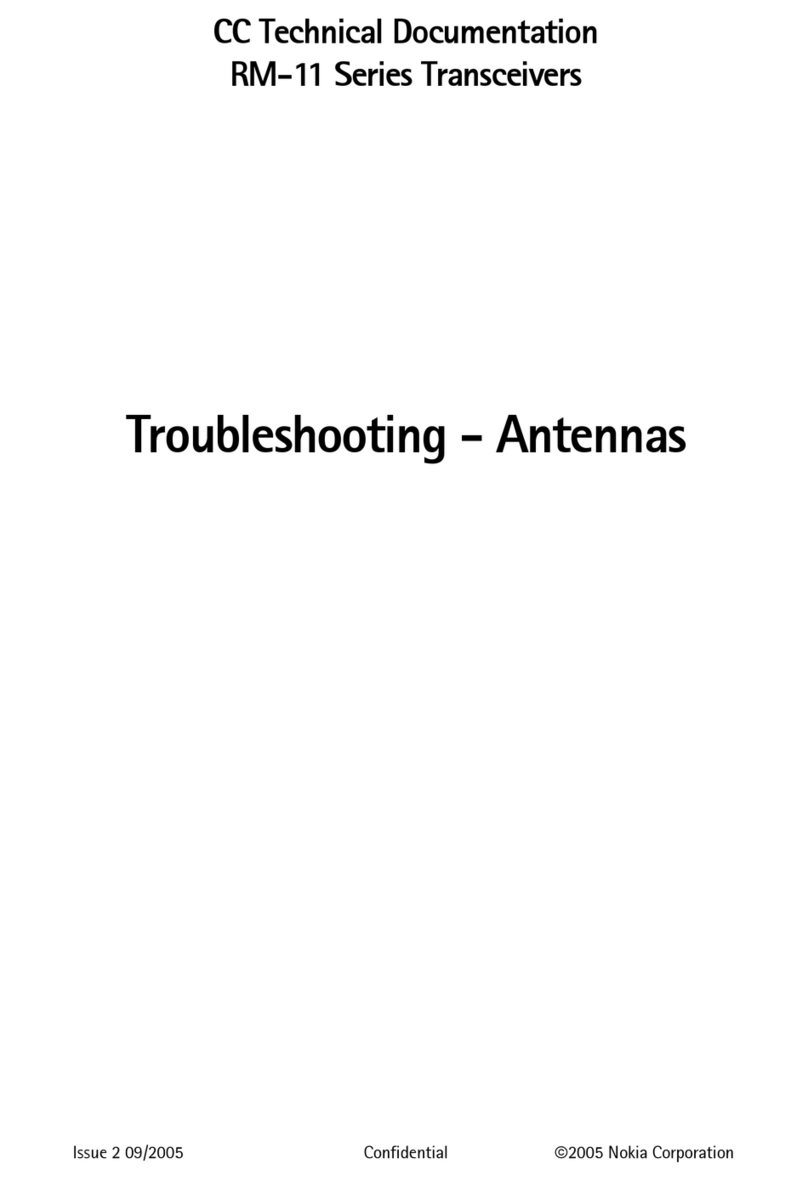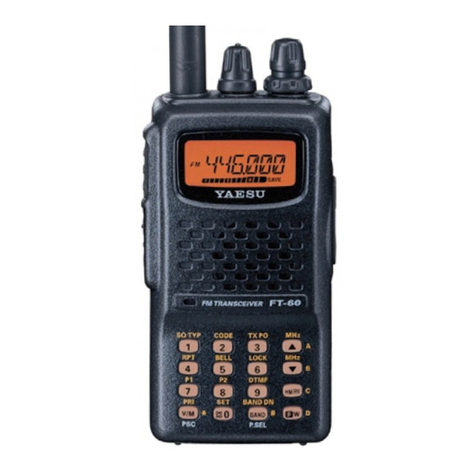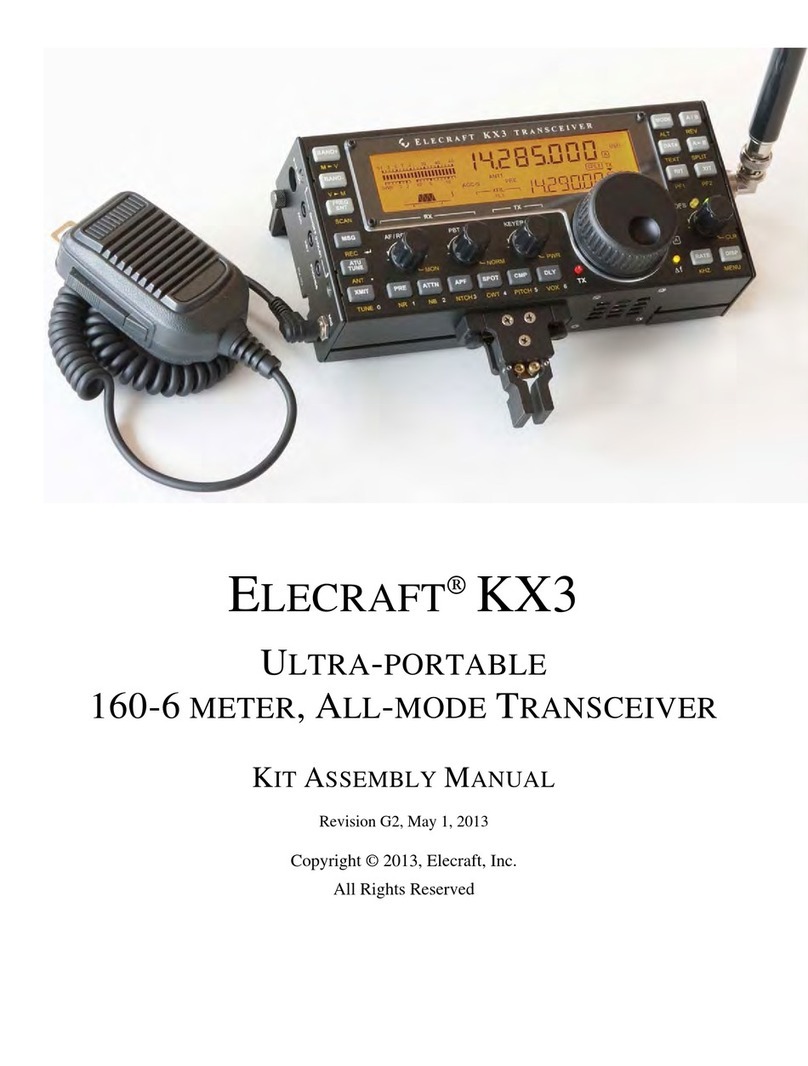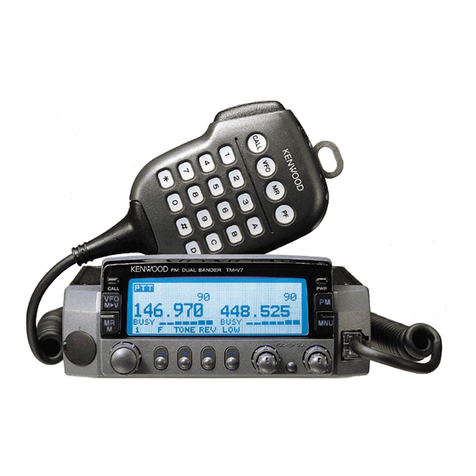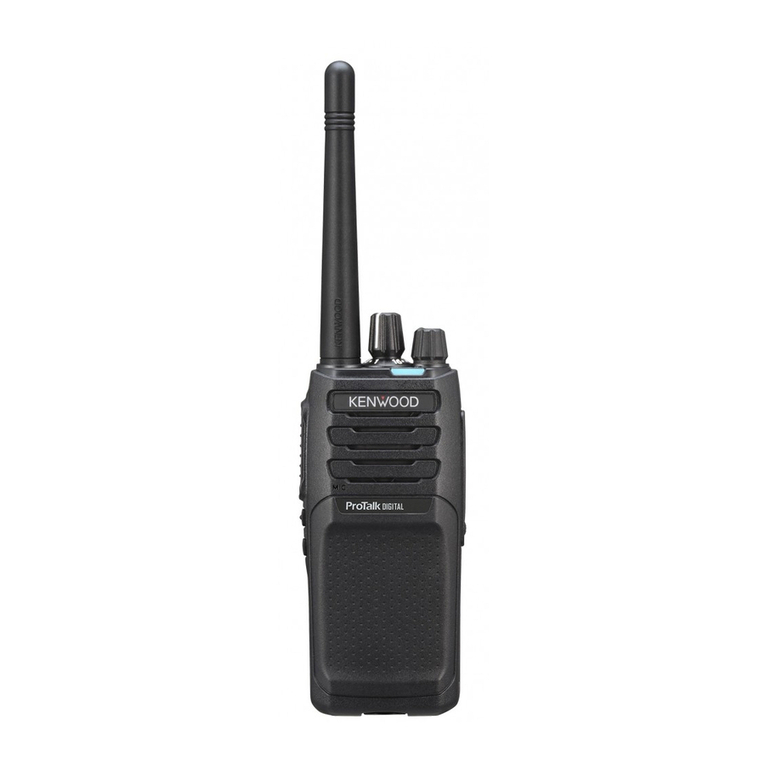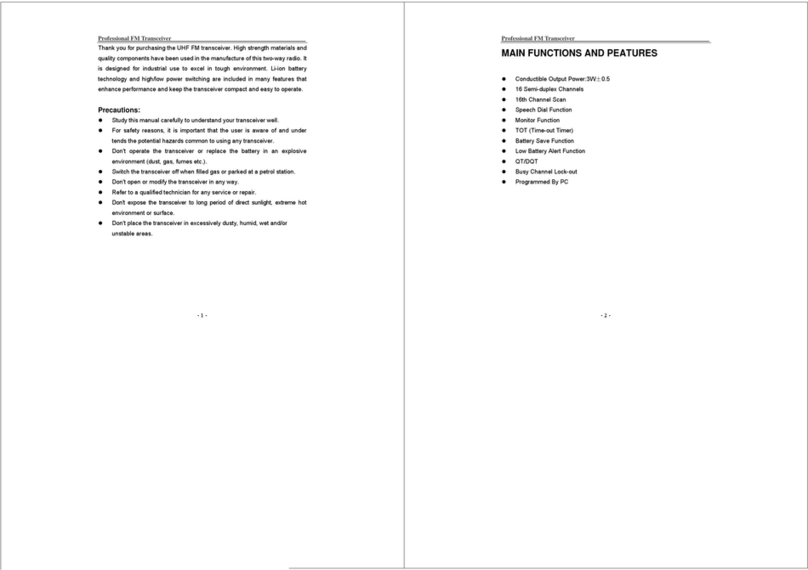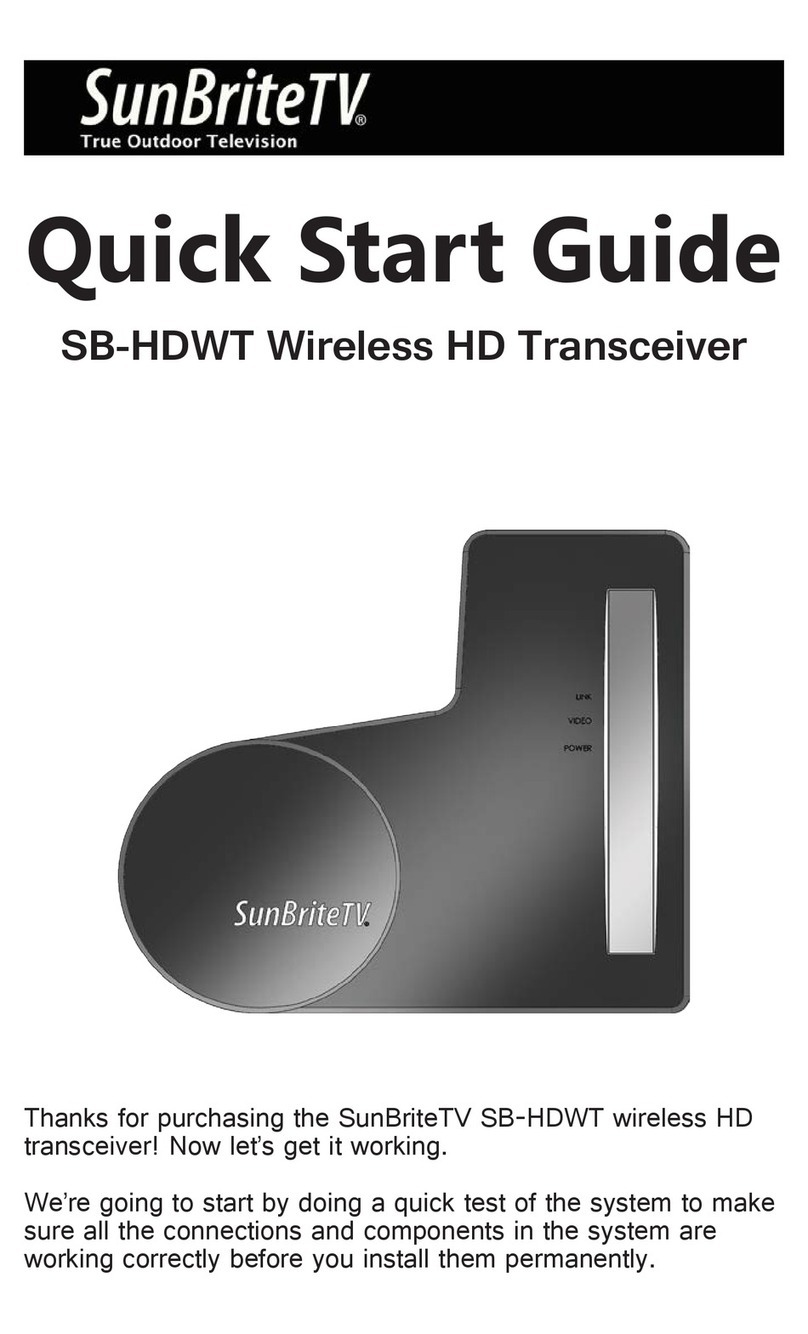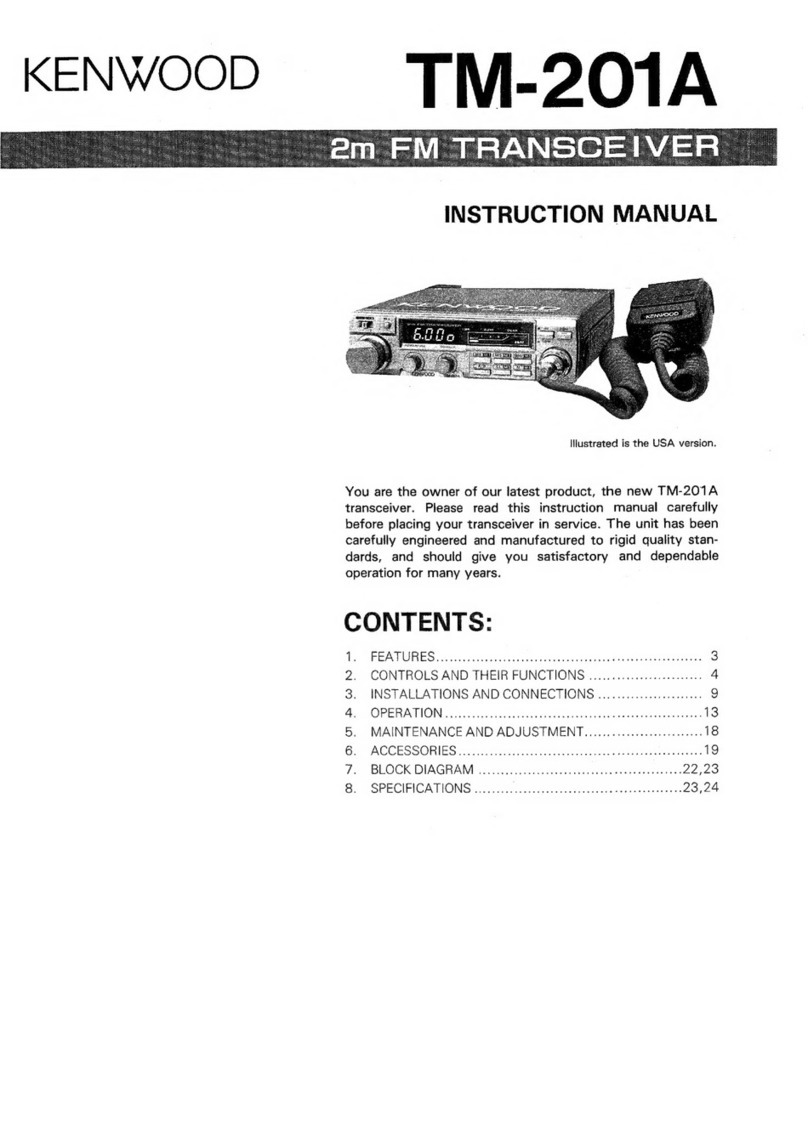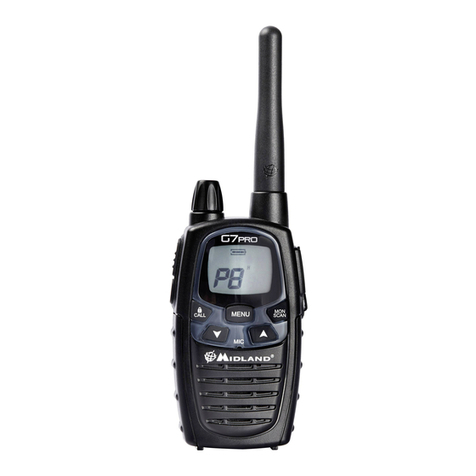Icom IC-V85E User manual

INSTRUCTION MANUAL
New2001
This device complies with Part 15 of the FCC Rules. Operation is
subject to the following two conditions: (1) this device may not cause
harmful interference, and (2) this device must accept any interference
received, including interference that may cause undesired operation.
iV85
FM TRANSCEIVER
iV85E
iV85-T

i
New2001
FOREWORD
Thank you for purchasing this Icom transceiver. The IC-V85 f m
t r a n s c e i v e r is designed and built with Icom’s superior tech-
nology and craftsmanship. With proper care, this transceiver
should provide you with years of trouble-free operation.
We want to take a couple of moments of your time to thank
you for making the IC-V85 your radio of choice, and hope
you agree with Icom’s philosophy of “technology first.” Many
hours of research and development went into the design of
your IC-V85.
DFEATURES
❍7 W*— high transmit output power
*7 W : IC-V85 except [THA] version,
5.5 W : IC-V85 [THA] version
❍CTCSS and DTCS encoder/decoder stand-
ard
❍Optional DTMF decoder
IMPORTANT
READ ALL INSTRUCTIONS carefully and completely
before using the transceiver.
SAVE THIS INSTRUCTION MANUAL— This in-
struction manual contains important operating instructions
for the IC-V85.
EXPLICIT DEFINITIONS
WORD DEFINITION
RWARNING!
CAUTION
NOTE
Personal injury, fire hazard or electric
shock may occur.
Equipment damage may occur.
Recommended for optimum use. No risk of
personal injury, fire or electric shock.
Icom, Icom Inc. and the Icom logo are registered trademarks of
Icom Incorporated (Japan) in Japan, the United States, the United
Kingdom, Germany, France, Spain, Russia and/or other countries.

ii
New2001
RWARNING RF EXPOSURE! This device emits
Radio Frequency (RF) energy. Extreme caution should be ob-
served when operating this device. If you have any questions
regarding RF exposure and safety standards please refer to
the Federal Communications Commission Office of Engineer-
ing and Technology’s report on Evaluating Compliance with
FCC Guidelines for Human Radio frequency Electromagnetic
Fields (OET Bulletin 65)
RWARNING! NEVER hold the transceiver so that
the antenna is very close to, or touching exposed parts of
the body, especially the face or eyes, while transmitting. The
transceiver will perform best if the microphone is 5 to 10 cm
(2 to 4 inches) away from the lips and the transceiver is verti-
cal.
RWARNING! NEVER operate the transceiver with
a headset or other audio accessories at high volume levels.
Hearing experts advise against continuous high volume op-
eration. If you experience a ringing in your ears, reduce the
volume or discontinue use.
RWARNING! NEVER operate the transceiver while
driving a vehicle. Safe driving requires your full attention—
anything less may result in an accident.
RWARNING! NEVER connect the transceiver to an
AC outlet. This may pose a fire hazard or result in an electric
shock.
NEVER connect a power supply of more than 16 V DC
through the optional CP-19R c i g a r e t t e l i g h t e r c a b l e to the
[DC 11V] jack to prevent damaging the transceiver.
NEVER connect the transceiver to a power source using
reverse polarity. This will ruin the transceiver.
NEVER cut the DC power cable between the DC plug and
fuse holder. If an incorrect connection is made after cutting,
the transceiver may be damaged.
NEVER expose the transceiver to rain, snow or any liquids.
The transceiver may be damaged.
NEVER operate or touch the transceiver with wet hands.
This may result in an electric shock or ruin the transceiver.
NEVER attempt to charge alkaline or dry cell batteries. Be
aware that external DC power connections will charge bat-
teries inside the battery case. This will damage not only the
battery case but also the transceiver.
DO NOT push the PTT when not actually desiring to trans-
mit.
PRECAUTIONS

iii
New2001
SUPPLIED ACCESSORIES
qAntenna* . . . . . . . . . . . . . . . . . . . . . . . . . . . . . . . . . . . . 1
wHand strap*. . . . . . . . . . . . . . . . . . . . . . . . . . . . . . . . . . . 1
e2251 OPT sheet* . . . . . . . . . . . . . . . . . . . . . . . . . . . . . . 1
rBattery pack*/Battery case* . . . . . . . . . . . . . . . . . . . . . . 1
tBelt clip* (with screws) . . . . . . . . . . . . . . . . . . . . . . . . . . 1
yAC Adapter* . . . . . . . . . . . . . . . . . . . . . . . . . . . . . . . . . . 1
*Not supplied with some versions.
r
y
qw t
e
r
DO NOT operate the transceiver near unshielded electri-
cal blasting caps or in an explosive atmosphere.
BE CAREFUL! The transceiver will become hot when
operating it continuously for long periods.
AVOID using or placing the transceiver in direct sunlight
or in areas with temperatures below –10°C (+14˚F) or above
+60°C (+140˚F).
Place the unit in a secure place to avoid inadvertent use by
children.
AVOID the use of chemical agents such as benzine or al-
cohol when cleaning, as they can damage the transceiver’s
surfaces.
Even when the transceiver power is OFF, a slight current still
flows in the circuits. Remove the battery pack or case from
the transceiver when not using it for a long time. Otherwise,
the battery pack (Li-ion: BP-227) or installed batteries will be-
come exhausted.
For USA only:
Caution: Changes or modifications to this transceiver, not
expressly approved by Icom Inc., could void your authority to
operate this transceiver under FCC regulations.
PRECAUTIONS—continued

iv
New2001
• BP-226 b at t e r y c a s e
Battery case for 5×AA (LR6) size alkaline batteries.
• BP-227 l i -i o n b at t e r y p a c k
7.4 V, 1850 mAh (minimum)/1950 mAh (typical) Lithium-ion
battery pack.
• BC-119N d e s k t o p c h a r g e r + AD-100 c h a r g e r a d a p t e r
For rapid charging of battery packs. An AC adapter is sup-
plied with the charger. Charging time: approx. 2–2.5 hrs.
• BC-121N
m u l t i
-
c h a r g e r
+ AD-100
c h a r g e r
a d a p t e r
(6 pcs.)
For rapid charging of up to 6 battery packs (six AD-100’s are
required) simultaneously. An AC adapter may be supplied de-
pending on version. Charging time: approx. 2–2.5 hrs.
• CP-19R c i g a r e t t e l i g h t e r c a b l e w i t h n o i s e f i lt e r
Used for operation and charging a battery pack connected
to transceiver via a DC power source. (11.7 V–15.9 V DC)
• MB-98 b e lt c l i p
MB-98: Same as that supplied with the transceiver.
• UT-108 d t m f d e c o d e r u n i t
Provides pager and code squelch capabilities.
• SP-13 e a r p h o n e
Provides clear receive audio in noisy environments.
• FA-B2E w h i p a n t e n n a
Same as that supplied with transceiver.
• HM-75A/HM-131L/HM-158L s p e a k e r -m i c r o p h o n e s
Combination speaker-microphones that provide convenient
operation while hanging the transceiver from your belt.
HM-75A has 4 function switches for remote control capabilities.
HM-131L/HM-158L are equipped with an earphone jack and
a revolving clip.
• HM-128L/HM-153L/HM-166L e a r p h o n e -m i c r o p h o n e
You can clip the microphone with PTT switch to your lapel
or breast pocket.
• HS-85 h e a d s e t
Allows you hands-free operation. Includes VOX, PTT and
“one-touch” PTT with time-out timer.
• VS-1L p t t /v o x u n i t +HS-94 h e a d s e t
VS-1L p t t /v o x u n i t
Required when using the headset.
HS-94 e a r -p i e c e t y p e h e a d s e t
Earhook headset with flexible boom microphone.
• CS-V85 c l o n i n g s o f t w a r e +OPC-478/U/UC c l o n i n g c a b l e
Provide quick and easy programming of memory channel,
memory name etc.
• OPC-474 c l o n i n g c a b l e
For cloning between transceivers.
• LC-167 c a r r y i n g c a s e
Helps protect the transceiver from scratches, etc.
OPTION LIST

v
New2001
TABLE OF CONTENTS
FOREWORD ........................................................................ i
IMPORTANT......................................................................... i
EXPLICIT DEFINITIONS...................................................... i
PRECAUTIONS.............................................................. ii–iii
SUPPLIED ACCESSORIES............................................... iii
OPTION LIST .................................................................... iv
TABLE OF CONTENTS.................................................. v–vi
QUICK REFERENCE GUIDE ���������������������������������������� I–VI
■Preparation.................................................................. I
■Your first contact ........................................................ IV
■Repeater operation..................................................... V
■Programming memory channels ............................... VI
1 ACCESSORIES ��������������������������������������������������������� 1–2
■Accessory attachment................................................ 1
2 PANEL DESCRIPTION���������������������������������������������� 3–8
■Switches, controls, keys and connectors.................... 3
■Function display ......................................................... 7
3 BATTERY PACKS���������������������������������������������������� 9–16
■Battery pack replacement .......................................... 9
■Cautions ................................................................... 11
■Regular charging ..................................................... 13
■Rapid charging ........................................................ 14
■External DC power operation ................................... 16
4 BASIC OPERATION���������������������������������������������� 17–21
■Power ON................................................................. 17
■VFO mode selection................................................. 17
■Setting a frequency .................................................. 17
■Setting audio/squelch level....................................... 19
■Receive and transmit................................................ 19
■Monitor function........................................................ 19
■Display type.............................................................. 20
■Key lock function ...................................................... 20
■Weather channel operation
(USA version only).................................................... 21
5 REPEATER OPERATION�������������������������������������� 22–25
■General..................................................................... 22
■Reversed duplex mode............................................. 22
■Offset frequency....................................................... 23
■Subaudible tones...................................................... 23
■Repeater lockout ...................................................... 24
■Auto repeater function (USA version only) ............... 25
6 MEMORY/CALL OPERATION ������������������������������ 26–31
■General description .................................................. 26
■Selecting a memory channel.................................... 26
■Selecting the call channel ........................................ 26
■Programming the memory/call channels.................. 27
■Channel name programming.................................... 28
■Memory transfers ..................................................... 28

vi
New2001
1
2
3
4
5
6
7
8
9
10
11
12
13
14
15
16
17
18
19
■Memory bank selection ............................................ 30
■Memory bank setting................................................ 30
■Transferring bank contents ....................................... 31
7 DTMF MEMORY ���������������������������������������������������� 32–34
■Programming a DTMF code sequence .................... 32
■Transmitting a DTMF code sequence....................... 33
■DTMF transmission rate........................................... 34
8 SCAN OPERATION����������������������������������������������� 35–38
■Scan types ............................................................... 35
■Programmed scan.................................................... 35
■Memory scan............................................................. 36
■Skip channels........................................................... 37
■Scan resume condition............................................. 37
■Priority watch............................................................ 38
9 SUBAUDIBLE TONES������������������������������������������� 39–42
■Tone squelch ............................................................ 39
■Pocket beep operation.............................................. 41
■Tone scan ................................................................. 42
10 PAGER/CODE SQUELCH
(Requires Optional UT-108) ��������������������������������� 43–46
■Pager function .......................................................... 43
■Code programming................................................... 43
■Pager operation........................................................ 45
■Code squelch ........................................................... 46
11 SET MODES���������������������������������������������������������� 47–56
■SET MODE .............................................................. 47
■INITIAL SET MODE ................................................. 51
12 SET MODE INSPECTION ������������������������������������� 57–58
13 CLONING �������������������������������������������������������������� 59–60
■Transceiver-to-transceiver cloning ............................ 59
■Cloning using a PC .................................................. 60
14 RESETTING FUNCTIONS ������������������������������������������ 61
■Partial reset .............................................................. 61
■CPU reset................................................................. 61
15 TROUBLESHOOTING������������������������������������������������� 62
16 OPTION ����������������������������������������������������������������������� 63
■Optional UT-108 installation ..................................... 63
17 SPECIFICATIONS ������������������������������������������������������� 64
■General..................................................................... 64
■Transmitter................................................................ 64
■Receiver ................................................................... 64
18 CE �������������������������������������������������������������������������� 65–66

I
New2001New2001
QUICK REFERENCE GUIDE
■Preparation
DAntenna
Attach the antenna to the trans-
ceiver as illustrated at right.
DBelt clip
Conveniently attaches to your belt.
Attach the belt clip with the supplied screws using a phillips
screwdriver.
To attach the belt clip
DBattery pack replacement
Before replacing the battery pack, push and hold [PWR] for
1 sec. to turn the power OFF.
• To attach the battery pack
Slide the battery pack on the back of the transceiver in the
direction of the arrow (q), then lock it with the battery re-
lease button.
•Slidethebatterypackuntilthebatteryreleasebuttonmakesa
‘click’ sound.
• To release the battery pack
Push the battery release button in the direction of the arrow
(w) as shown below. The battery pack is then released.
w
q
Battery pack
Battery release button

New2001
QUICK REFERENCE GUIDE
II
Quick reference guide
DBattery case— optional for some versions
When using a BP-226 battery case attached to the trans-
ceiver, install 5 AA (LR6) size alkaline batteries as illustrated
at right.
qHook your finger under the latch, and open the cover in the
direction of the arrow (q). (Fig.1)
wThen, install 5 ×AA (LR6) size alkaline batteries. (Fig.2)
•Installthealkalinebatteriesonly.
•Besuretoobservethecorrectpolarity.
•Donotpintheribbonunderthebatteries.
eClose the cover with fitting in the direction of the arrow (w)
first, then firm the latch in place (e). (Fig.1)
•Besuretothegasketandtheribbonaresetcorrectly,
and do not protrude out of the battery case. (Fig.3)
RCAUTION!
•Wheninstallingbatteries,makesuretheyareallthe
same brand, type and capacity. Also, do not mix new
and old batteries together.
•Keepbatterycontactsclean.It’sagoodideatoclean
battery terminals once a week.
q
we
BP-226 Latch
Fig.1
Fig.2
Ribbon
Fig.3
Gasket
Ribbon

QUICK REFERENCE GUIDE
III
New2001
DRegular charging
When using a BP-227 battery p a c k attached to the trans-
ceiver, prior to using the transceiver for the first time, the bat-
tery pack must be fully charged for optimum life and
operation.
DCharging note
•BesuretoturnthetransceiverpowerOFF.
Otherwise the battery pack will not be charged completely or takes
longer charging time periods.
•ExternalDC poweroperationbecomes possiblewhen
using an optional CP-19R. The attached battery pack is
also charged simultaneously, except during transmit. (see
p. 16 for more details)
Even through there is no indication during regular charg-
ing, the transceiver automatically stops charging the bat-
tery pack when the battery pack is fully charged (BP-
227’s voltage becomes approx. 7.4 V) or the continuous
charging time is over 15 hours.
• BC-167A/D
• CP-19R (Optional)
to AC outlet
to cigarette lighter
socket (12 V DC)
Transceiver
to
[DC 11V]
Turn power OFF
while charging the
battery pack.
• Charging time period:
Approx. 12–13 hours

1-1-32 Kamiminami, Hirano-ku, Osaka 547-0003, Japan
New2001
<Intended Country of Use>
■GER ■FRA ■ESP ■SWE
■AUT ■NED ■POR ■DEN
■GBR ■BEL ■ITA ■FIN
■IRL ■LUX ■GRE ■SUI
■NOR
#02 Europe
#22 Europe-1
<Intended Country of Use>
■GER ■FRA ■ESP ■SWE
■AUT ■NED ■POR ■DEN
■GBR ■BEL ■ITA ■FIN
■IRL ■LUX ■GRE ■SUI
■NOR
#23 UK
A-6552D-1EX-qa
Printed in Japan
© 2006–2012 Icom Inc.
Printed on recycled paper with soy ink.
This manual suits for next models
2
Other Icom Transceiver manuals

